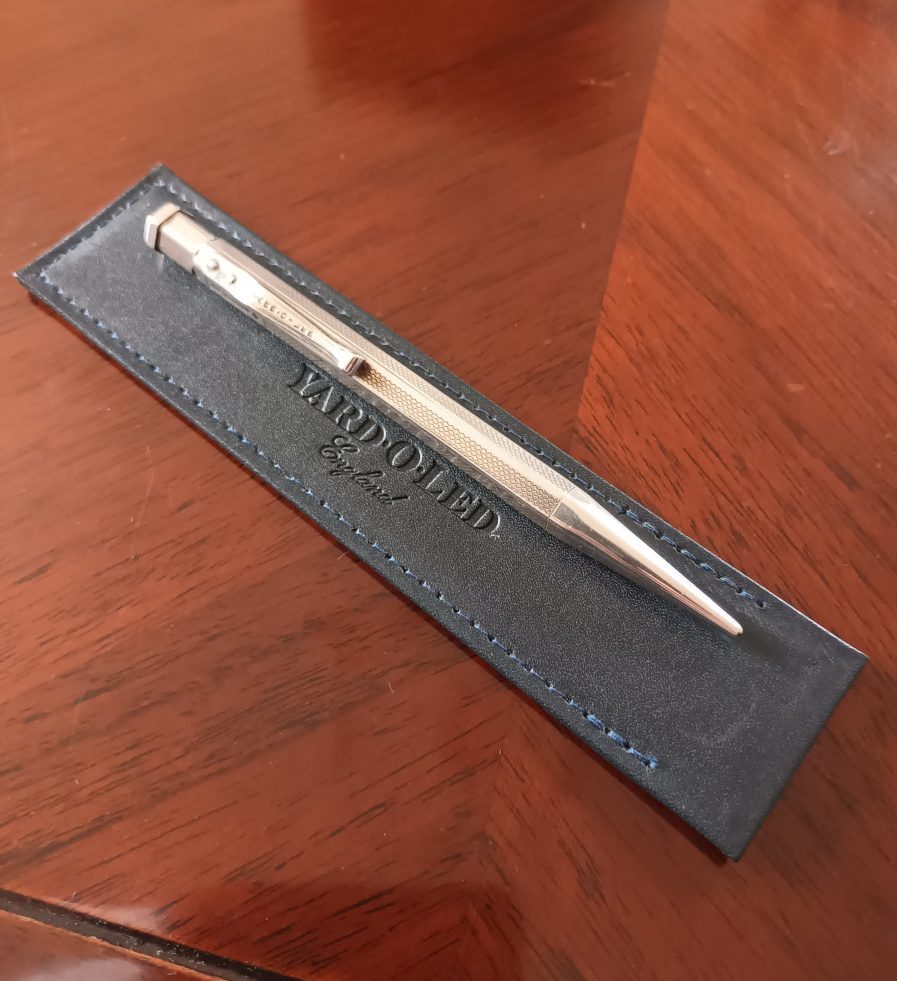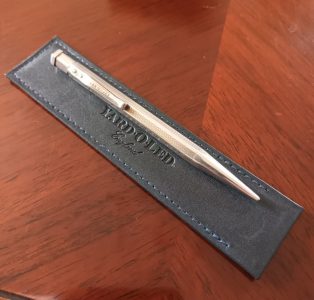As a keen crossword doer – general knowledge, not cryptic (I do not have the brain for the latter), I utilise a pencil. Hitherto, my particular weapon of choice has been a cheap and cheerful plastic Paper Mate propelling job, with a useful eraser on the end. It does the job just fine, however, I had been considering for a little while whether to try and go a bit more upmarket. To this end, providence reared it’s head recently when I saw in a local auction catalogue a silver Yard-O-Led pencil, complete with accompaniments. In this case; box, leather holster, booklet, silver polishing cloth and lastly, an original receipt from the year 2000. Included in the lot was also a Sheaffer gold plated fountain pen. The lot price estimate was £80-£120. This I felt was worthy of further scrutiny so decided to call in on auction day.
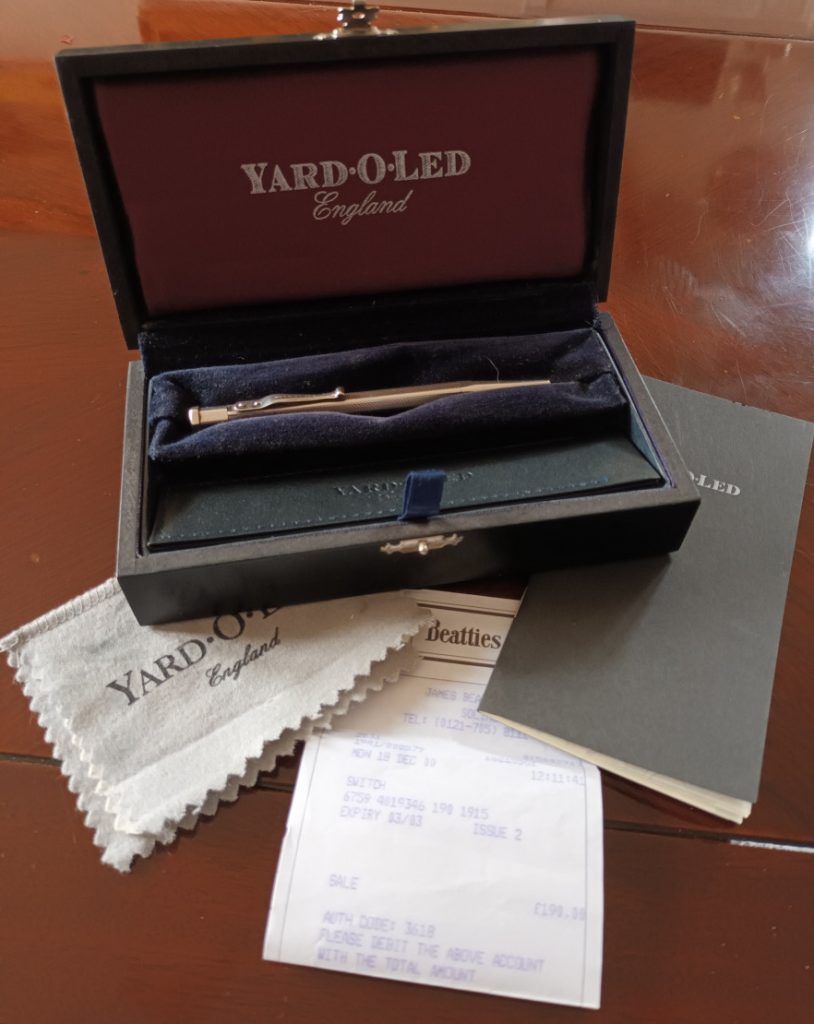
Upon further inspection, the pencil and bits and pieces were all as advertised and in good condition – although there appeared to be no lead installed. The fountain pen seemed also in decent condition – with an unusual spiral pattern on the barrel. The gold plate had worn a bit on the two end caps, but the gold 14k nib seemed fine. In view of all this I went for the lot and secured for £100 (so a mite over £125 with commission etc). This was to my mind quite satisfactory.
When I got home I decided to research a little more – as although I knew a bit about this type of pencil, certainly not in great detail. It then transpired that the company is still in business – something I was frankly surprised (and pleased) at. After all, who these days still uses a propelling pencil (aside from my dear 93 year old Aunt Audrey, who still does numerous newspaper crosswords per day – including cryptic!) and in silver? Anyway, the business has a decent and informative website, which shows that aside from the original silver pencils, they also make ball point, roller, and fountain pens – all in a similar style. I observed that they still make my pencil and it costs some £299 today – as opposed to back in 2000, £199. The fountain pens – being larger and more involved, are somewhat dearer coming in at the £800-£1200 level depending on type.
In terms of the firm’s history, we need to go back to 1822 in London, when one Sampson Mordan patented the World’s first propelling pencil. This patent was subsequently acquired by Birmingham’s Edward Baker & Co. Another strand is then introduced from Germany, when a silversmith called Ludwig Bremer came to London in the early 20c. He then perfected a silver propelling pencil, and because it contained twelve 3 inch leads, it was dubbed “Yard-O-Led”! Bremer then went into business with Frank Tuffnel – whose father had worked with Sampson Mordan, and so started the Yard-O-Led Company in 1934. Business seems to have been good, but the 2nd WW intervened and destroyed the two factories they had. After the war, a new factory was started in Birmingham, plus the business merged with Edward Baker so now all was complete!
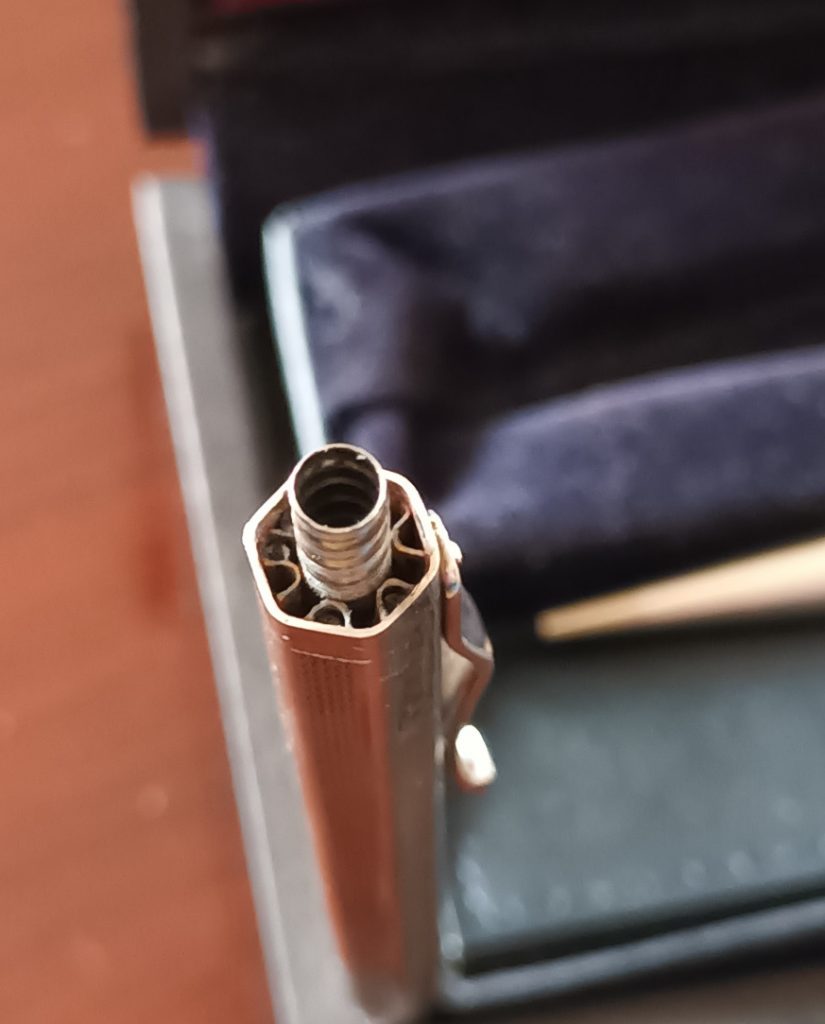
Today, the factory remains in the same location and produces all their products from there using hallmarked 925 sterling silver.
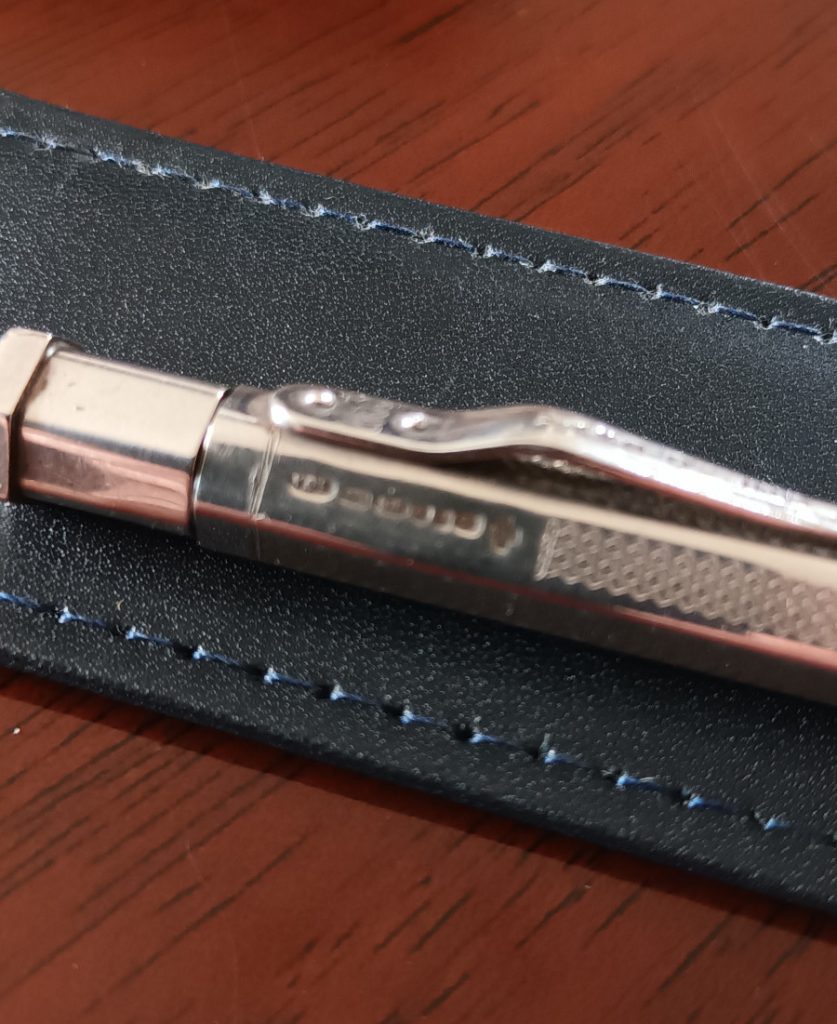
There are two main barrel shapes – the original hexagonal type (it has six sides) and the circular one. Of these, the two main variants are the original hexagonal Diplomat with a barleycorn pattern (like the one I bought at auction), and the round Viceroy barleycorn (another acquisition – see below)! There are some other designs and patterns – one being floral in nature.
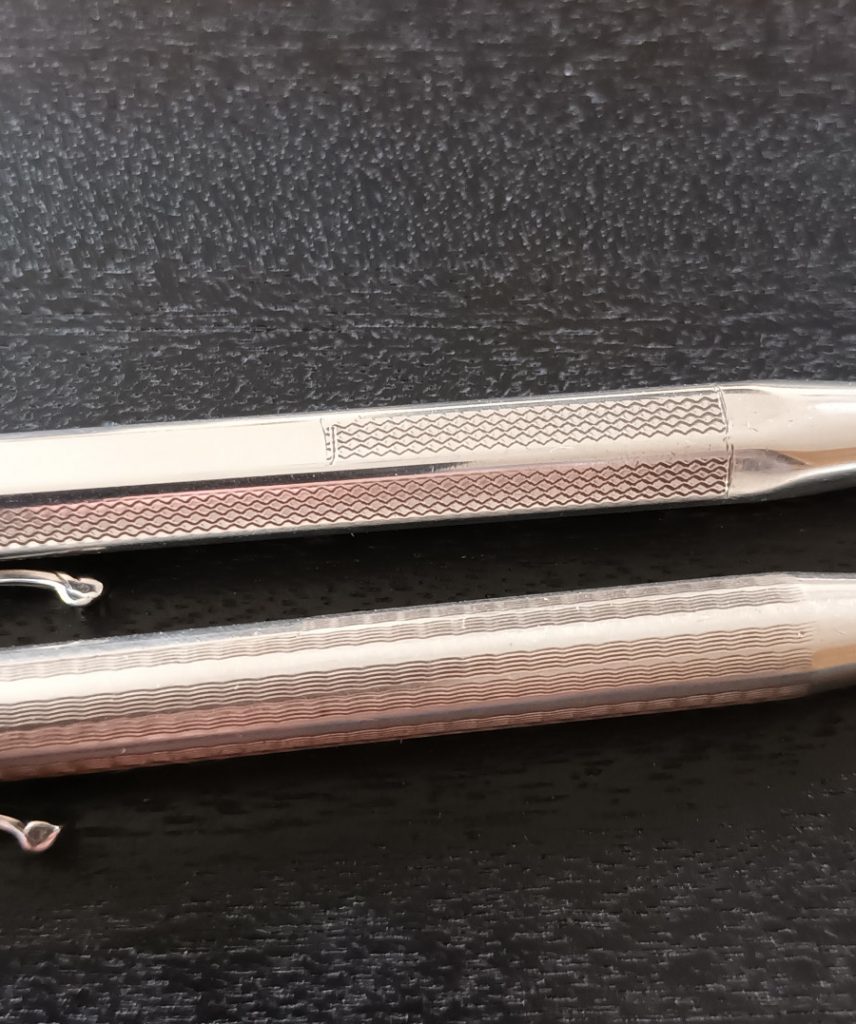
At this juncture, I need to just impart another short story. A mere four days after my auction buy, I popped into a small antique/curio shop not far from me. I noticed in a display cabinet a variety of writing instruments – including a few old propelling pencils. Two took my fancy – both probably pre-war as they were of a resin-type material. One is a plain colour, but the other had an attractive marbled finish. At only £12 each, and quite attractive, I asked to have a closer look. They seemed in decent condition and up to a point worked – but I could see no makers names. The shop owner disappeared, then reappeared, asking if I would be interested in a silver propelling pencil. Yes, you’ve guessed it – another Yard-O-Led! This one was round and looked a bit older, but seemed in good condition – although no lead could be made to emerge. I asked how much he wanted for it – £20 was suggested. Needless to say I agreed, so bought all three. After I got home I checked the hallmarks and this one was from 1959, and moreover I think it is like the Viceroy today, but with an unusual wave pattern. After some fiddling about I got all the pencils to work. The main reason why many seem defective (other than being just empty), is that broken bits of lead jam the fine exit hole. As such refilling and twisting is just going to end in tears! One need to just do a bit of reaming with a paperclip end or similar!
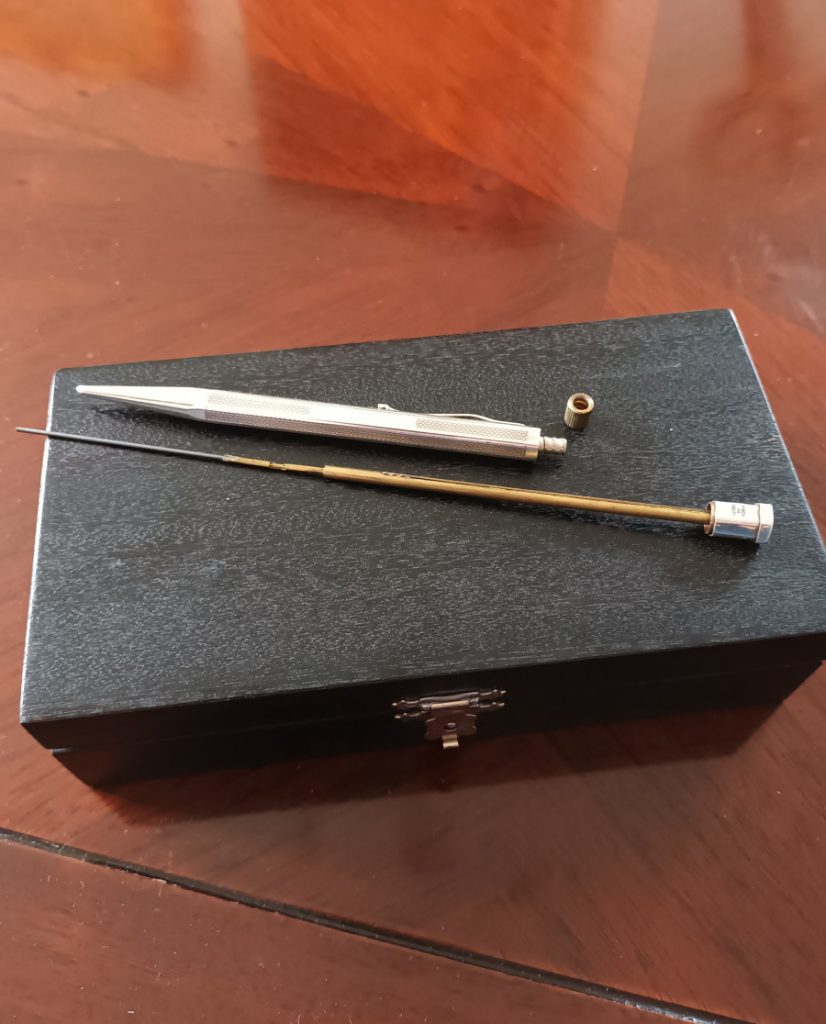
After all this, I subsequently made contact with the firm. I ended up speaking with Alex at the factory – he has been there for quite a number of years so is very knowledgeable – and friendly. I explained my story and we chatted about the company, and it was all pretty fascinating. Apparently they still do a decent trade as their wares are bought usually for special occasions – say 21st birthdays and wedding gifts, or other things like long-service or retirement awards. Being metal, the barrels can also be engraved with names/initials and so on. I understand that in the 90’s Filofax acquired the firm, but I think it is now back in private ownership.
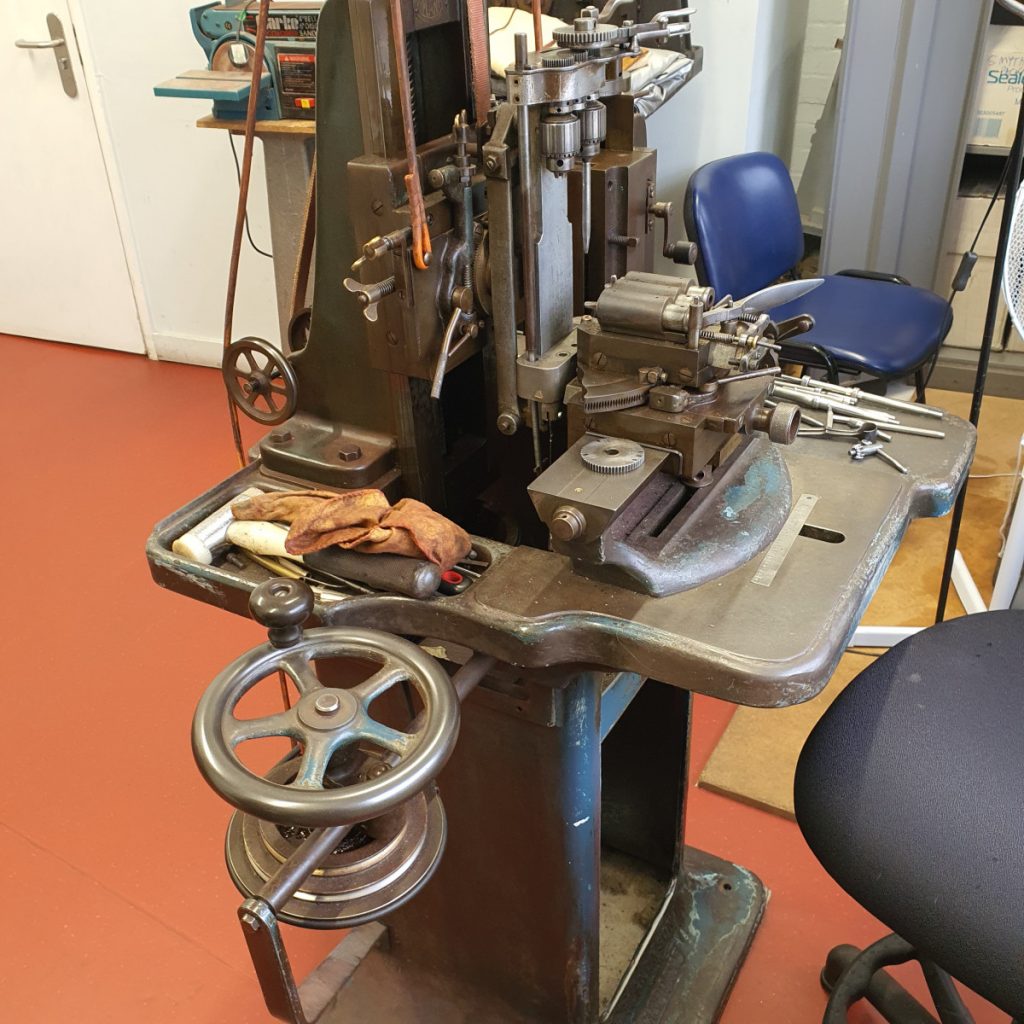
Alex went on to tell me that they receive all the pencils and pens simply as silver tubes. They then reduce the ends in an old extruding machine. Then pattern engraving, polishing, and assembly occurs. If one registers the product, there is a lifetime warranty, plus they can mend/service any of their products. Alex kindly sent me some images of their old engraving machine, two of which I include here.
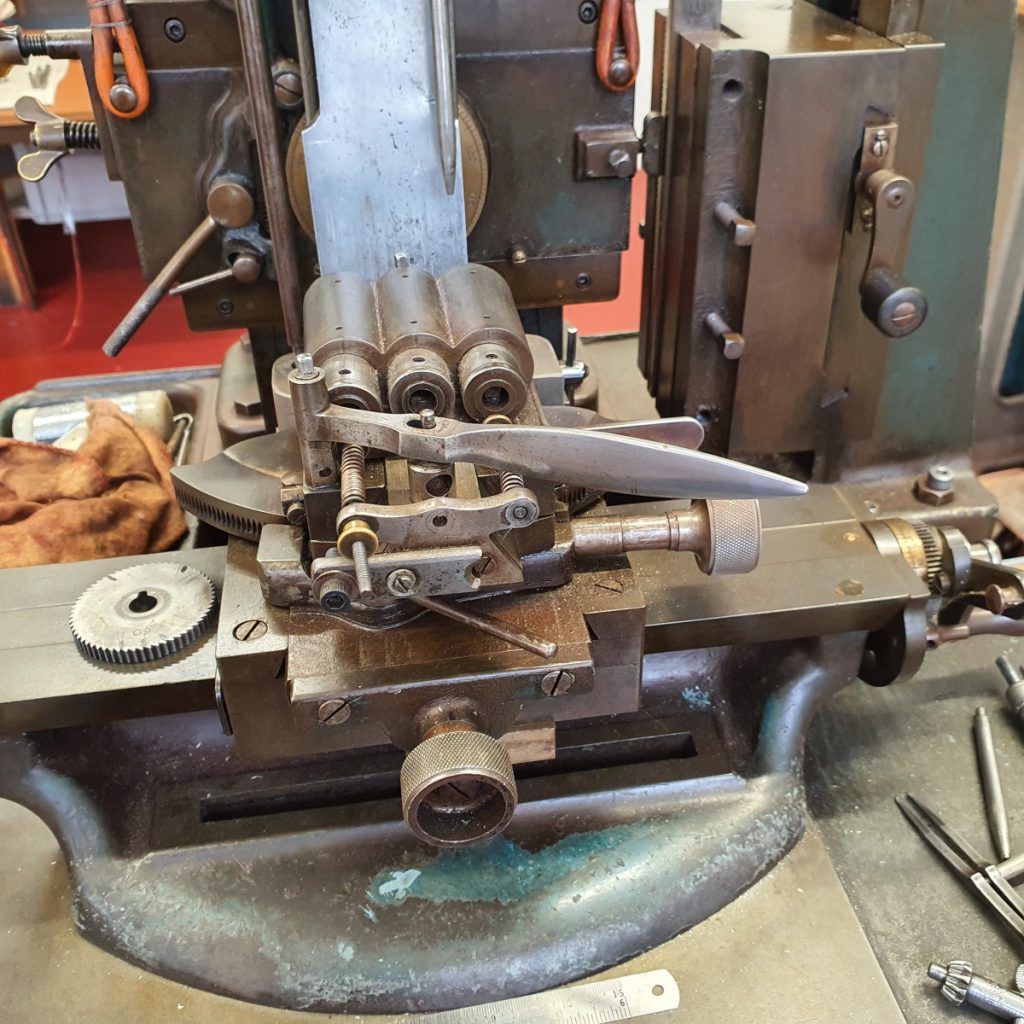
In conclusion, I think it is great that we still do some great “vintage” manufacturing in this country, keeping alive old skills and products. I also think that the prices noted are quite reasonable – bearing in mind that we are talking about a precious metal product and hand-made involvement. As such it would be viewed I guess as a “luxury” product, so is worthy of inclusion in this section! Anyway, if you are in the market for something special and practical, check out their website, plus, it may also make you write more and a little neater!
Words and Images: The Writer.
Thanks to Alex at The Yard-O-Lead Co for his help and the two lathe images.

